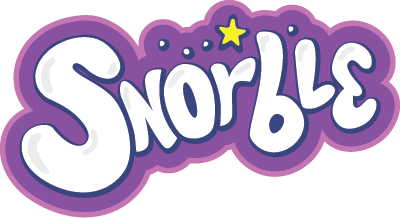Use your words. How many times have you said that to your kiddo? For children, expressing their emotions doesn’t come easily. You can teach emotional expression to your little one and explain the difference between emotions and feelings. You can also lean on Snorble®, our smart companion for children designed to teach healthy habits and social-emotional learning through educational interactive games. More on Snorble later but first, children need to learn what emotions are before they can express themselves with words.
What’s the difference between emotions and feelings?
Feelings and emotions are not synonyms, nor are they interchangeable. Although they do share similarities there is an integral difference between the two: feelings are experienced consciously whereas emotions can be manifested consciously or subconsciously.
Feelings encompass both physical sensations and emotional experiences. Think of hunger or pain. Both are conscious experiences that we know are happening to us. When we’re hungry we know it even if our stomach doesn’t grumble. When we’re in pain, we know it because, well, it hurts. With these feelings come emotions. Are we hungry because we’re bored? Does pain bring sadness and angst because we stubbed our toe?
For children, it can be confusing to understand the difference between physical pain and sadness until they can put a name to their emotions.
How can you teach emotional expression to your child?
When showing your child how to use their emotions, you’re giving them permission to feel by labeling their emotions. Once kiddos learn that it’s okay to feel whatever they’re feeling, they’ll have an easier time expressing how they feel.
To teach your little one about emotional expression you can:
Use feeling words
Feeling words go beyond common emotions like sadness, happiness, and anger. These are words that children can use every day to express how they feel that can pinpoint their exact emotions.
Feeling words can be split into positive and negative categories. Keep in mind that negative doesn’t mean bad. Negative feelings are just as valid as positive ones and it’s important that your kiddo learns that.
Positive:
- Brave
- Cheerful
- Curious
- Excited
- Fantastic
- Friendly
- Generous
- Important
- Interested
- Surprised
- Proud
- Silly
- Shy
- Satisfied
- Safe
- Relieved
- Peaceful
- Loving
- Calm
Negative:
- Confused
- Disappointed
- Embarrassed
- Ignored
- Impatient
- Jealous
- Lonely
- Bored
- Frustrated
- Uncomfortable
- Worried
- Stubborn
- Overwhelmed
- Tense
Whether the word your child uses falls into the negative or positive category, the fact that they’re able to use feeling words to express themselves is a huge step in the right direction. When kids can get a handle on their emotions by using feeling words you’ve given them the tools they need to speak up for themselves in other situations.
Sing it out
Songs like “If You’re Happy and You Know it” show kids that emotions can be fun. You don’t have to use real lyrics and tunes. Making up new lyrics to “Row Your Boat”, “Ring Around the Rosie” or creating your own melody to show your child the benefits of expressing their emotions can be a fun activity. You don’t have to have pipes like Celine Dion either. Belting out tunes and having a blast while learning is a gift you can give your kiddo. And who knows, you could unlock their or your hidden singing talents.
Press pause on the story
When reading to your child, take a moment to press pause on the story and ask questions like, “How do you think this character is feeling?” or “How would you react to this situation? Would you be scared too?”. You can also have your child guess how the characters are feeling and have them think of a time when they felt those same emotions.
Face your faces and bodies
When kids can identify the emotions portrayed physically by others (smiles, frowns, balled fists, smirks, hands on hips, etc.), they’ll have a better chance of expressing their own emotions. Body language and facial expressions tell us when someone is angry, happy, surprised, and pretty much every other emotion out there. Showing your child how to recognize when you and the people around them are expressing emotions via body and face, they’ll learn to react accordingly and pay attention to their own outward expressions.
Explain behaviors vs emotions
Feeling angry is one thing but throwing a toy across the room is another. If your kiddo is overwhelmed by their emotions, especially when they’re upset, they may not be able to see that their behavior has shifted. All feelings and emotions are valid. However, all behaviors aren’t. Explain to your little one that being angry is perfectly normal and acceptable but acting aggressively to match their anger isn’t. Plus, when your youngster learns to manage their behaviors while still expressing their emotions, they’re making progress in their social-emotional development.
Snorble’s got all the feels
Our smart companion, Snorble, was created with children’s development in mind. Based on an e-pedagogical educational method that allows kids to excel through play-based learning, Snorble encourages children to adopt healthy habits and social-emotional learning techniques, and get a good night’s sleep. Between the Magical Bedtime Experience™, storytime, games, and jokes, your little one will have everything they need to shine. Well, they already shine, but Snorble’ll help them shine even brighter!
Sources
- Georgetown University Center for Child and Human Development
- Proud to Be Primary: Emotions for Kids
- Teaching emotions to young children: tips and tricks
- Vanderbilt University: Teaching Your Child to Identify and Express Emotions
- Kiddie Matters: Ways to Teach Children about Feelings
- Wake Forest University: Difference Between Emotions and Feelings
Photo by Jorge Franco on Unsplash


